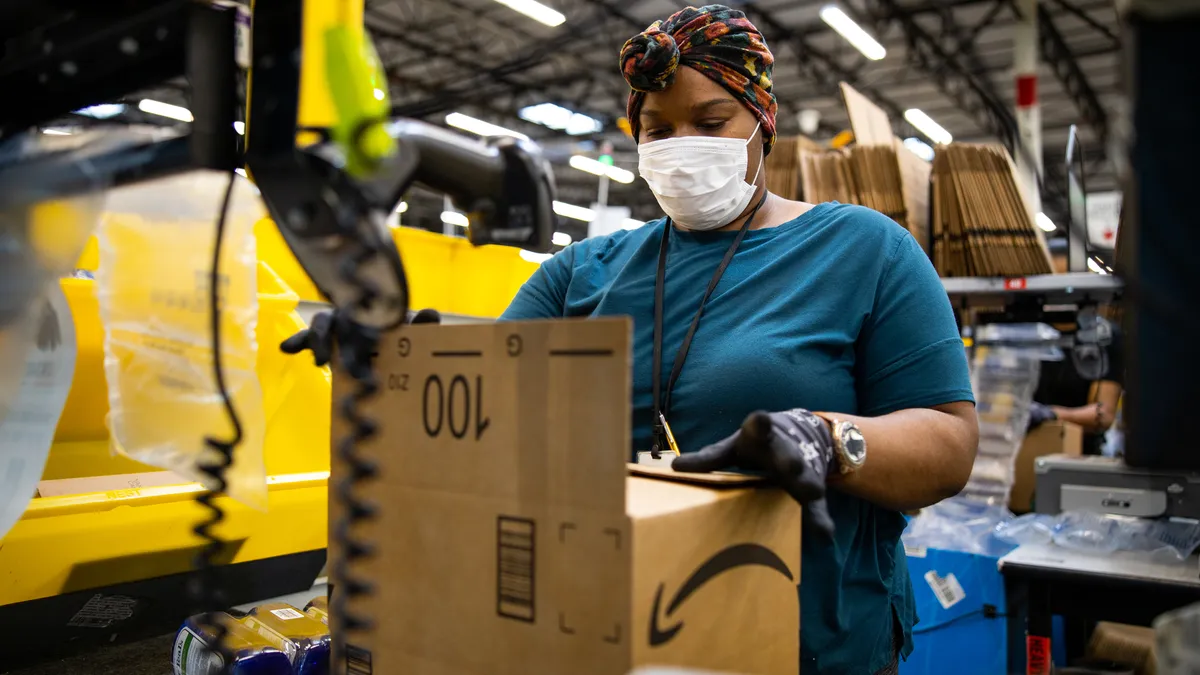Dive Brief:
- Amazon plans to spend nearly $1 billion on pay increases for its front-line workers in the U.S., the company said in a press release.
- With pay increases starting in October, the average starting wage for employees in its customer fulfillment and transportation operations will go from $18 to more than $19, Amazon said. (The full range runs from $16 to $26 per hour, depending on position and location.)
- Amazon has also expanded a program dubbed “Anytime Pay” that allows instant and flexible access of up to 70% of eligible earned pay rather than relegating pay to a weekly or bi-weekly schedule.
Dive Insight:
With the cost of living on the rise, retailers will likely come under pressure to increase wages for workers, who over the past two and a half years have shouldered many of the burdens of pandemic-era operations, from social distancing to out-of-stocks.
Amazon in particular has set out to become “Earth’s Best Employer.” That comes after complaints about working conditions in its facilities have long dogged the company. This year, an Amazon fulfillment center in Staten Island unionized — the first in the company’s nearly 30 year history — and others have voted or moved to vote.
Amazon has argued against unions as “the best answer” for its workers while trying to position itself as a world-class employer. Meanwhile, the International Brotherhood of Teamsters, one of the country’s largest labor groups, has set up a division dedicated solely to organizing Amazon workers. In doing so, the union claimed Amazon was responsible for half of all workplace injuries in the warehouse sector and said that “we refuse to allow Amazon to continue to abuse and disrespect the more than one million Americans it employs.”
It’s not for nothing that workers at Amazon and other retail companies are looking to organize. Union representation tends to increase wages for retail workers, data shows. Weekly pay in 2021 was $24 higher for those in the retail trade represented by unions than nonunion workers, according to the Bureau of Labor Statistics.
Many retail wages have also been pushed up by higher minimum wages at the regional and state levels. Along with the benefits to workers, research has found that, for businesses, higher wages can yield increased labor from workers, cost savings from reduced turnover and productivity gains.
Amazon framed its wage increases as an investment in its workers and its relationship with them. “Continuing to invest in pay, providing easy access to earned wages at any time during the month, and offering great benefits and career advancement opportunities are all part of our long-term efforts to be the best employer in the world,” John Felton, senior vice president of Amazon’s worldwide operations, said in the release.
Amazon has also added partners to its education benefit for employees and made a development program that trains workers for engineering roles in its Amazon Web Services business.













